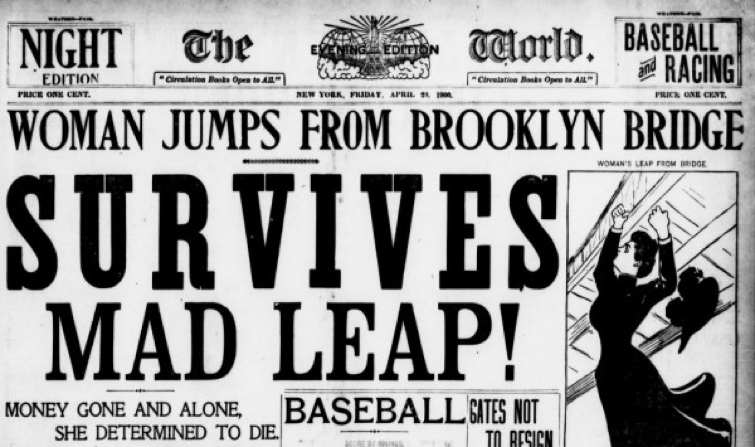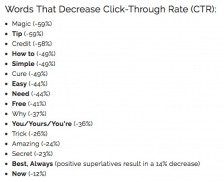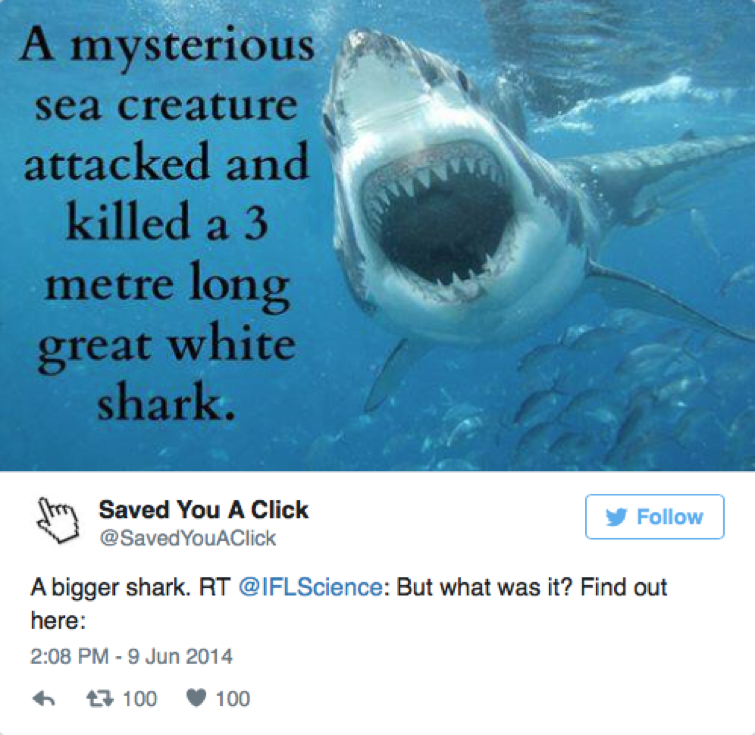
Don’t Take the Bait

You’ve probably come across it, but Clickbait is the content online that is sensational or provocative, and deployed simply to spike curiosity and draw attention — essentially “baiting” you into clicking their link. If the motivation for clickbait is vested in a website’s attempt to garner more readership, then it all began in the late 1800s with Yellow Journalism. Yellow Journalism, defined as sensationalistic, exaggerated, ill-researched, and often untrue reporting, had one goal — to outsell the rival paper.

These goals are reflected in media today and readers continue to fall for it. Studies show that curiosity actually causes a lapse in cognitive thinking, and it is during that lapse that we are most likely to click on headlines such as: “What the candidates’ rally music says about them!” Spoiler alert: Nothing.
Now while that lapse in thinking may have succeeded in earning a few clicks here and there, using clickbait-y words in your headlines has shown to actually kill a site’s clickthrough rate in the long-run. That’s right, putting the wrong word in your headline can destroy your credibility, regardless of the quality of the rest of the content.
So how do you avoid falling into the clickbait pit? Here are a few pointers that’ll help you come up with compelling, intelligent headlines that draw readers in and maintain the integrity a hardworking writer deserves:

We are busy people in a world of unlimited information. We want to know that the minutes we take out of our day to read something is going to be worth our time. Don’t compromise good content with a bad title just to get a few extra clicks. Chances are, the audience you actually want won’t be attracted to it and your credibility as a reliable source will suffer.
- Be clear — We live in a fast-paced world of media where ambiguity frustrates and falls short. Write a headline that will state clearly the subject of the article. Instead of “You’ll never guess which singers died 40 years ago!” consider The Sun’s front page on August 16, 1977 “KING ELVIS IS DEAD; He was 42 and alone.”
- Include a keyword — Adding a keyword or two in your headline will not only establish the topic for your readers, but also help with search engine optimization so they can find you in the first place.
- Short and sweet — Headlines between 20-40 characters are the best for page views and conversion rate.
- Define your medium — If you’ve published an infographic or photo gallery, analytics show that revealing that in the headline will increase your visitors. “Baby Otter Learns to Swim [photo gallery]” is more likely to get hits because people are going to be more attracted to an article if they’re promised photos of a baby animal.

We are busy people in a world of unlimited information. We want to know that the minutes we take out of our day to read something is going to be worth our time. Don’t compromise good content with a bad title just to get a few extra clicks. Chances are, the audience you actually want won’t be attracted to it and your credibility as a reliable source will suffer.

